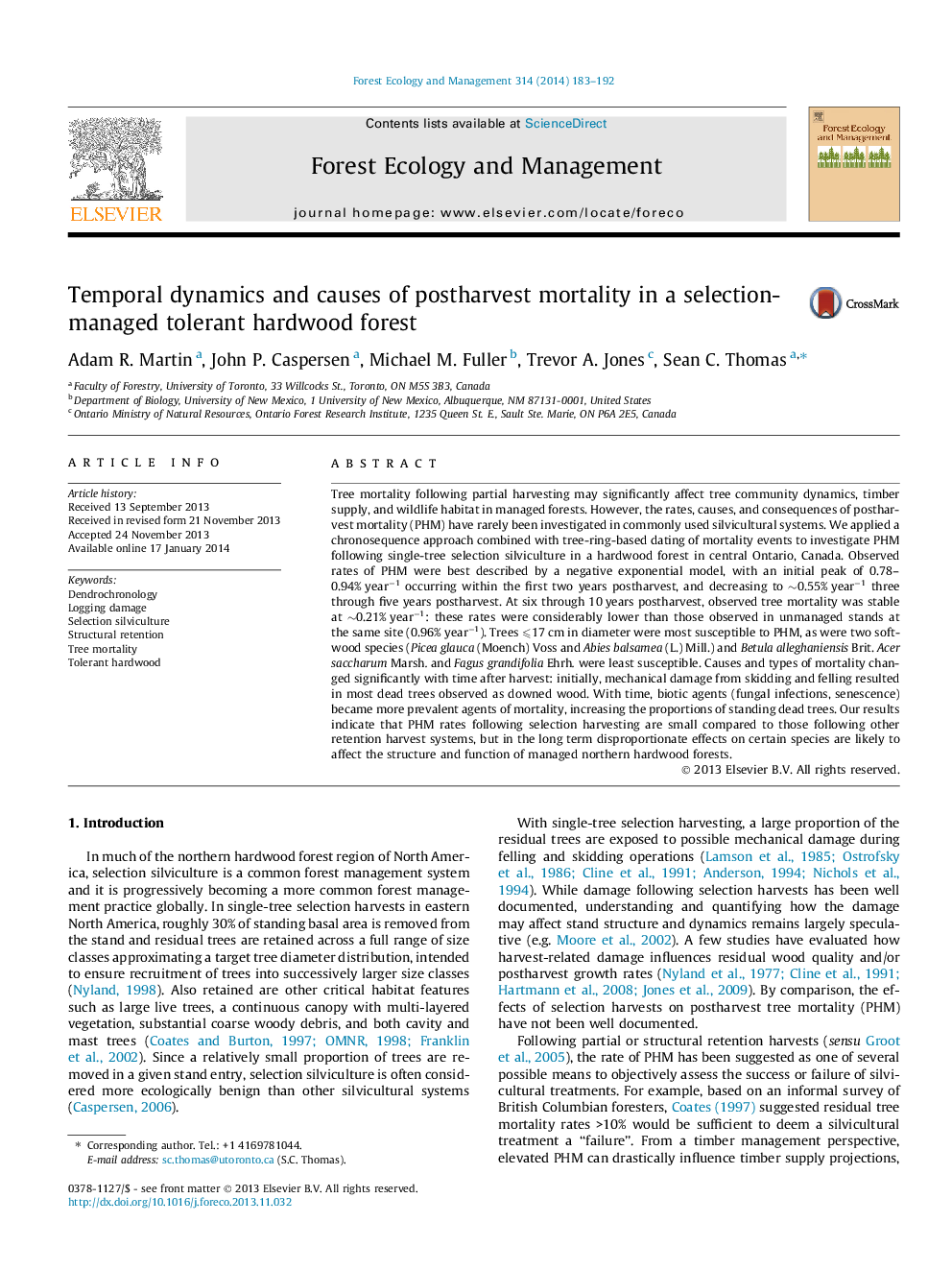| Article ID | Journal | Published Year | Pages | File Type |
|---|---|---|---|---|
| 86947 | Forest Ecology and Management | 2014 | 10 Pages |
•We examined rates and causes of tree mortality in following selection harvesting.•At 5 years postharvest, tree mortality rates are lower than in unmanaged forests.•Shade-intolerant species and trees ⩽17-cm dbh are most susceptible to mortality.•Skidding and felling are important causes or mortality immediately postharvest.•Uneven harvesting effects will influence structure and function of managed forests.
Tree mortality following partial harvesting may significantly affect tree community dynamics, timber supply, and wildlife habitat in managed forests. However, the rates, causes, and consequences of postharvest mortality (PHM) have rarely been investigated in commonly used silvicultural systems. We applied a chronosequence approach combined with tree-ring-based dating of mortality events to investigate PHM following single-tree selection silviculture in a hardwood forest in central Ontario, Canada. Observed rates of PHM were best described by a negative exponential model, with an initial peak of 0.78–0.94% year−1 occurring within the first two years postharvest, and decreasing to ∼0.55% year−1 three through five years postharvest. At six through 10 years postharvest, observed tree mortality was stable at ∼0.21% year−1: these rates were considerably lower than those observed in unmanaged stands at the same site (0.96% year−1). Trees ⩽17 cm in diameter were most susceptible to PHM, as were two softwood species (Picea glauca (Moench) Voss and Abies balsamea (L.) Mill.) and Betula alleghaniensis Brit. Acer saccharum Marsh. and Fagus grandifolia Ehrh. were least susceptible. Causes and types of mortality changed significantly with time after harvest: initially, mechanical damage from skidding and felling resulted in most dead trees observed as downed wood. With time, biotic agents (fungal infections, senescence) became more prevalent agents of mortality, increasing the proportions of standing dead trees. Our results indicate that PHM rates following selection harvesting are small compared to those following other retention harvest systems, but in the long term disproportionate effects on certain species are likely to affect the structure and function of managed northern hardwood forests.
